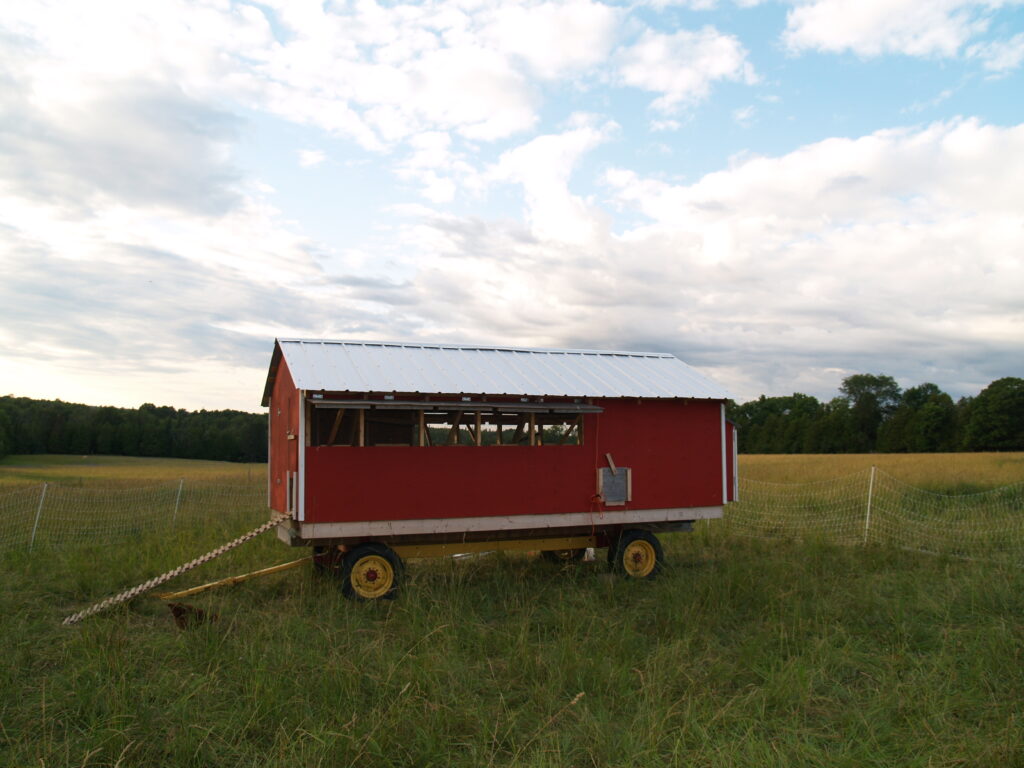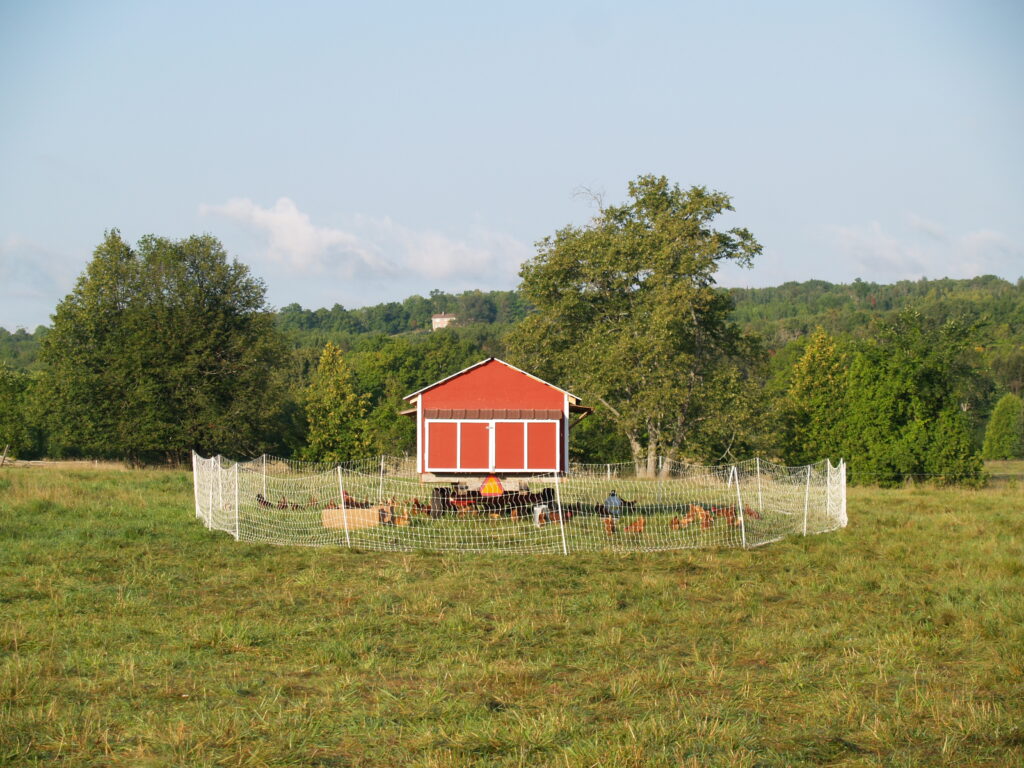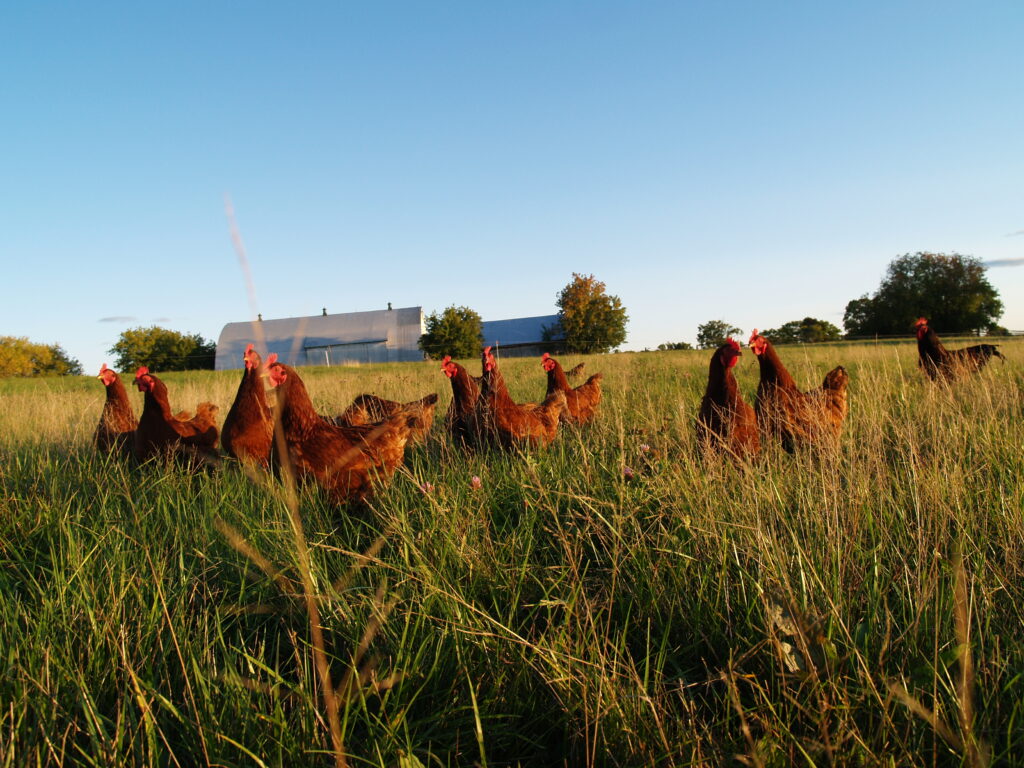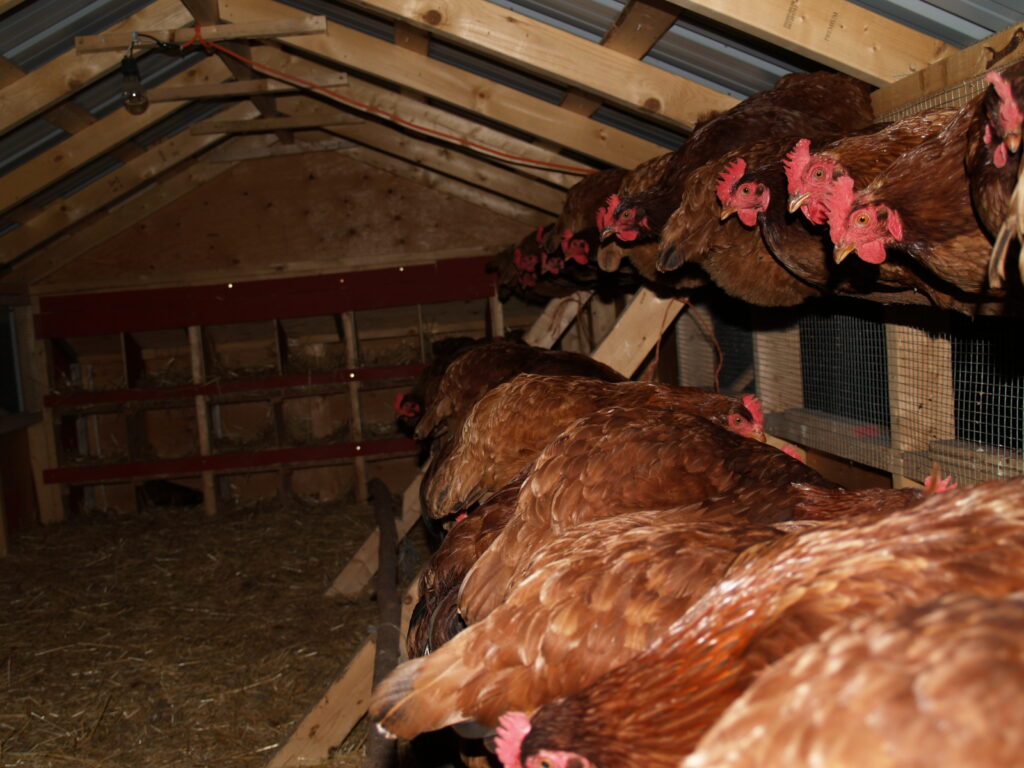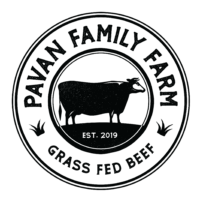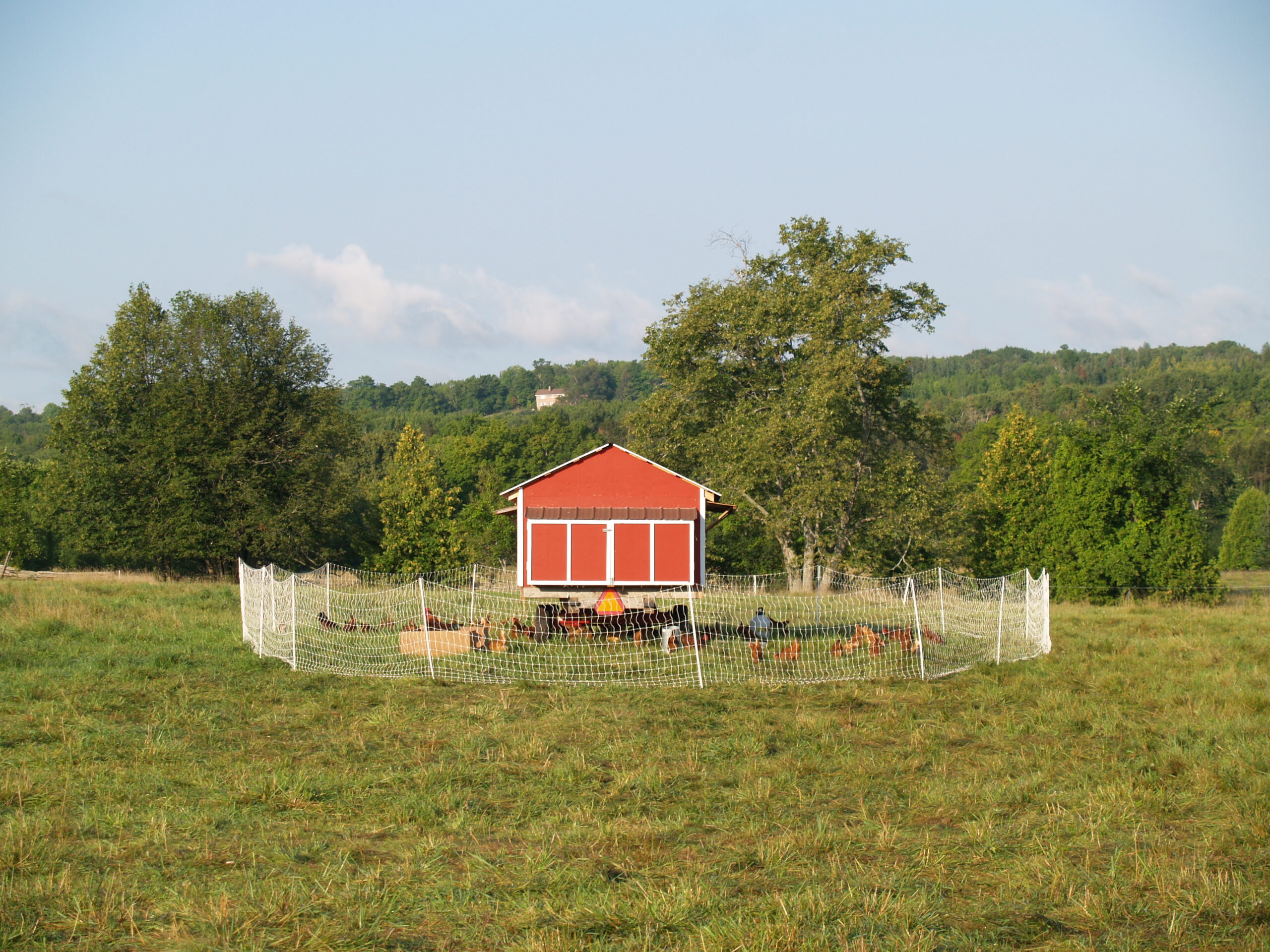Hens on the Move
Why Move Laying Hens Daily
During the growing season, every morning I take down a 100-foot electric wire fence and erect it one spot forward. I hitch my four wheeler to the mobile coop and I move it within the new enclosure.
Moving the hens daily allows them to spread their manure/fertility equally throughout the pasture while also receiving a fresh plot of grass to graze. With a static coop the chickens would soon devour all the green grass and the soil would become over nitrified from too many droppings. This would ultimately kill the soil. Moving the coop daily feeds the pasture, which improves health of the animals and thus creates more nutritional food.
Chickens fit in the holistic management of the farm by providing fertility and pasture disturbance. I can buy in fertility in the form of either granular fertilizer or grain that the laying hens excrete in the form of manure. I choose the latter as manure is a balanced fertilizer that goes beyond N-P-K, and laying hens also provide a source of income by selling eggs while increasing the health of my land.
The hens not only shape the landscape by their manure but also from scratching and pecking. Plant species is directly influenced by the type of disturbance. Grazing cows will allow a certain mix of plants to flourish while chickens another. When grazing together the pasture will experience different eating habits, techniques (tongue vs beak) and plant preferences.
· Hoof action will favor certain varieties of seed to germinate while the hen scratching will encourage another.
· Some plants flourish with cow manure while others prefer chicken.
· Hens can pluck pasture variates that live close to the grown will cows use their tongues to harvests the taller varieties.
Encouraging a greater variety of plant species supports the diversity of insects, microbiology, and birdlife, among others. As the farm harbors greater diversity it builds greater resilience and health
